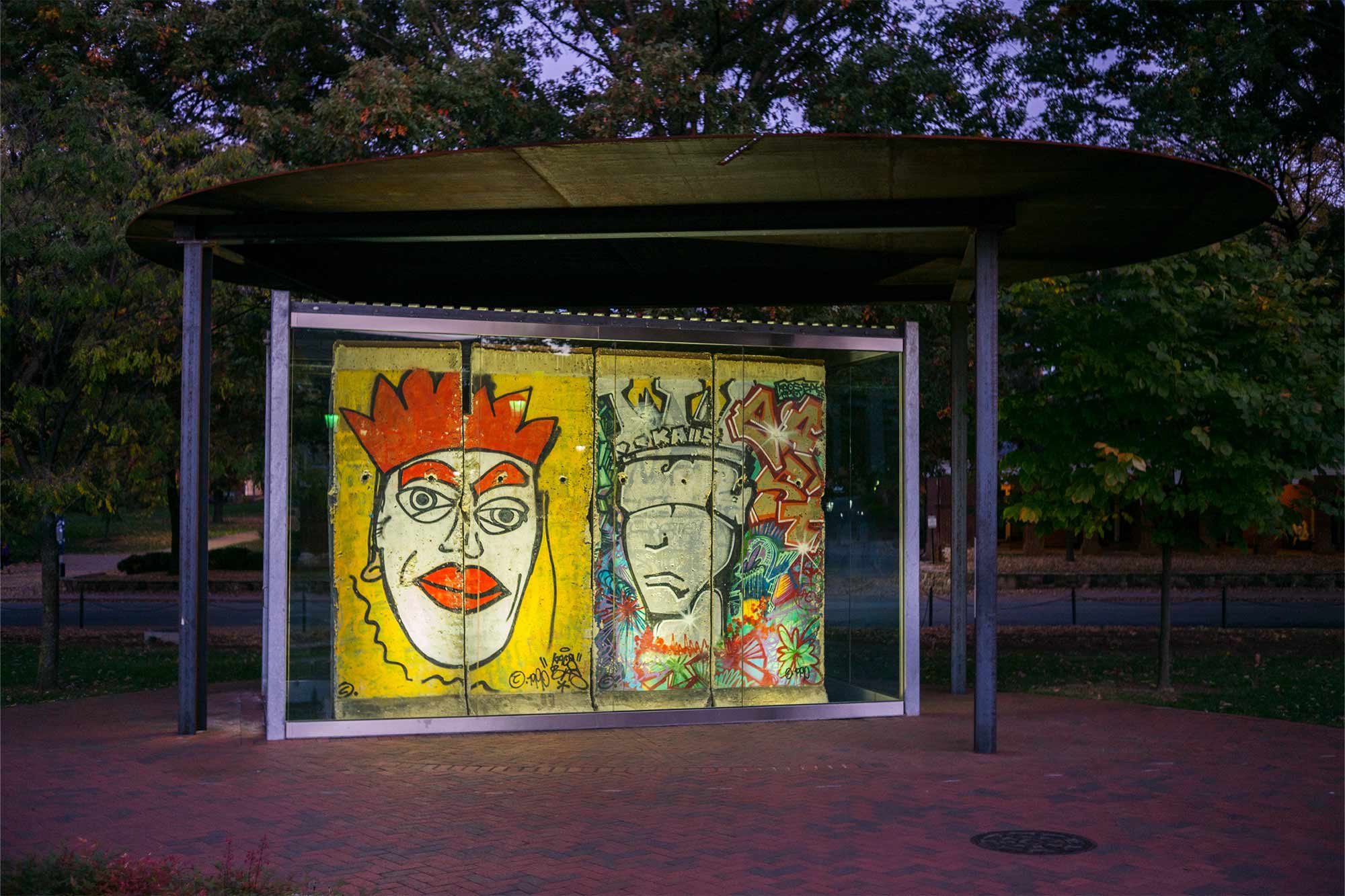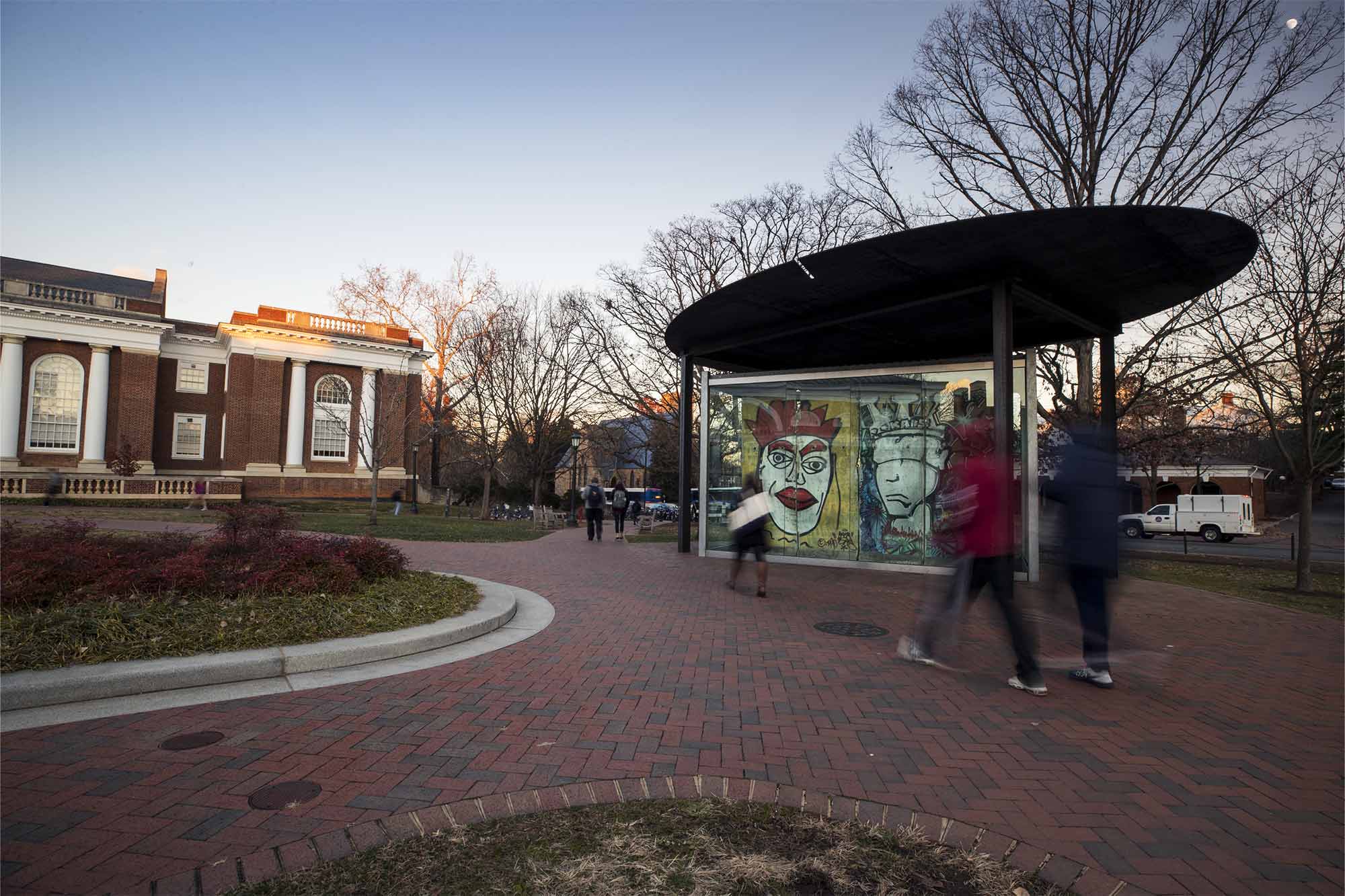Four panels of the toppled Berlin Wall – a unique piece of Cold War history – are likely standing on Grounds at the University of Virginia for their final year.
Called “Kings of Freedom,” the panels – with graffiti art on one side by West German artist Dennis Kaun – represented the two sides of Berlin when Germany was divided into democratic West Germany and communist East Germany until the collapse of the Soviet Union in 1989. In peaceful protest, people started physically breaking down the Berlin Wall after that. Germany’s unification soon followed.
The panels arrived on Grounds courtesy of art collector and business leader Robert Hefner and his wife, MeiLi Hefner, but were only slated for display for a little over a year. Yet every year since, UVA’s agreement with Hefner has been extended, and the panels have remained in view in a prominent spot along McCormick Road, near Alderman Library.
But according to University officials, it’s likely this is the final year for students and others to see this relic of the Cold War.
“We’re grateful to the Hefners for having these panels here and thrilled to have more opportunities for programming and for the University and community to enjoy them,” Jody Kielbasa, UVA’s vice provost for the arts, said.









